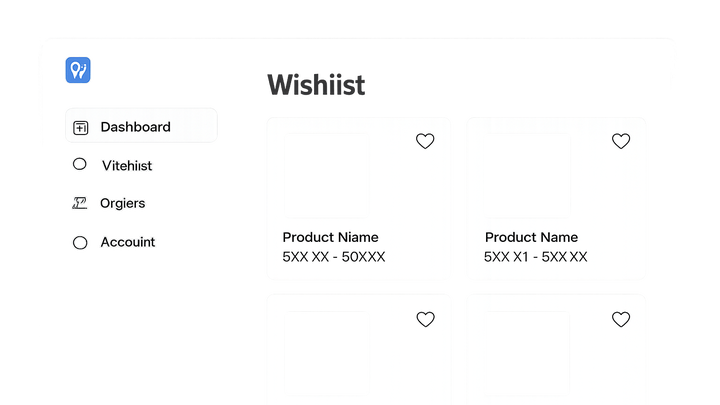Published on 2025-06-29T21:49:42Z
What is an eCommerce Wishlist? Examples and Best Practices
An eCommerce Wishlist is a feature that allows visitors to save products for future consideration without adding them directly to their cart. By offering a digital “bookmark” for desired items, wishlists help shoppers organize potential purchases, revisit interest points, and share selections with friends or family. For website critics focusing on CRO, UX, and SEO, wishlists are a critical touchpoint: they provide data on user intent, drive engagement, and signal positive site interactions to search engines. Tools like Prevue.me can analyze your wishlist implementation to surface actionable critiques—optimizing placement, CTA clarity, personalization, and accessibility for maximum lead generation.
Ecommerce wishlist
An eCommerce Wishlist lets users save products for later, boosting engagement, conversions, and SEO via personalized shopping experiences.
Definition and Context
This section defines what an eCommerce Wishlist is and its role in the online shopping process, providing clarity and context for its usage.
-
Core concept
An eCommerce Wishlist is a user-accessible list where shoppers can store products they are interested in, deferring purchase decisions while keeping track of desired items.
-
Role in user journey
Wishlists bridge the gap between initial product discovery and final purchase, acting as a digital bookmarking tool that encourages users to return and complete transactions.
Impact on CRO, UX, and SEO
Explore how wishlists influence conversion rate optimization, enhance user experience, and contribute to search engine performance.
-
Enhancing conversion rate optimization
By capturing user intent and facilitating tailored follow-ups, wishlists can reduce cart abandonment and increase conversion rates when paired with targeted incentives.
-
Improving user experience
Wishlists offer a personalized and convenient way for shoppers to organize potential purchases, boosting satisfaction and engagement through intuitive design.
-
Boosting seo through engagement metrics
Active wishlist interactions signal positive user engagement to search engines, potentially improving on-site dwell time and reducing bounce rates, which can favor SEO rankings.
Best Practices for Wishlist Design
Key guidelines and strategies for designing an effective wishlist feature that maximizes user engagement and supports site goals.
-
Visibility and accessibility
Ensure the wishlist icon is prominently placed in the header, product listings, and individual product pages to encourage usage.
- Consistent iconography:
Use a recognizable heart or bookmark icon across the site to maintain familiarity.
- One-click addition:
Allow users to add items to their wishlist with a single click or tap to streamline the process.
- Consistent iconography:
-
Data-driven personalization
Leverage user behavior and wishlist data to provide personalized product recommendations and targeted promotions.
- Dynamic suggestion widgets:
Display related products alongside wishlist items to encourage cross-selling.
- Segmented email campaigns:
Use wishlist contents to craft personalized email offers that resonate with individual interests.
- Dynamic suggestion widgets:
-
Social sharing and collaboration
Integrate sharing options to allow users to share wishlists with friends and create collaborative lists.
- Shareable links:
Generate unique URLs for wishlists that users can send via email or social media.
- Gift registries:
Offer registry templates for events like weddings or birthdays to expand wishlist utility.
- Shareable links:
Common Pitfalls and How to Avoid Them
Identify frequent issues in wishlist implementations and best practices to circumvent these challenges.
-
Hidden or confusing placement
Placing the wishlist feature behind multiple clicks can reduce discoverability; keep it easily accessible at all touchpoints.
-
Lack of follow-up engagement
Failing to send reminders or personalized offers based on wishlist items can lead to missed conversion opportunities.
-
Poor mobile optimization
Neglecting responsive design for wishlists on mobile devices can frustrate users; prioritize mobile-first layouts and touch-friendly interactions.
Implementation and Actionable Critiques with Prevue.me
How to leverage prevue.me to evaluate and optimize your wishlist feature for CRO, UX, SEO, and accessibility.
-
Ux and cro audits
Use prevue.me to receive actionable feedback on wishlist placement, CTA clarity, and user flow improvements.
-
Accessibility reviews
prevue.me highlights accessibility gaps such as missing ARIA labels or insufficient color contrast in wishlist components.
-
Integration example snippet
<div class="wishlist-btn" role="button" aria-label="Add to wishlist" onclick="addToWishlist(productId)"> <i class="icon-heart"></i> </div>
